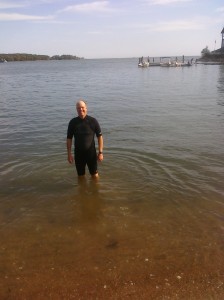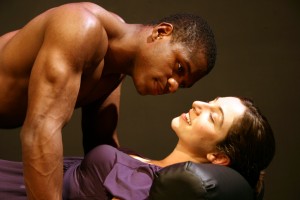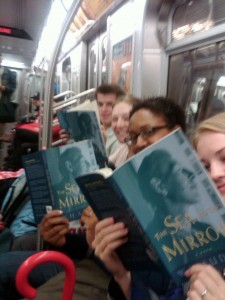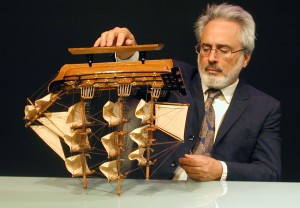As a quasi-reply to my first batch of student papers, here’s an offering of my own, a few paragraphs out of an oceanic reading of Macbeth that I’ve just finished. This version will be published in a Forum on “Shakespeare and Ecology” next year in *Shakespeare Studies*. I’ll be giving a slightly different oral version atthe Annual Shakespeare Colloquium at Farleigh Dickinson University in Madison, NJ, this Saturday at 1 pm. Come by if you’re in the area! It’s free & open to the public.
The ecological humanities have been drawn to Shakespeare in part because he’s the biggest fish in the Anglophone literary sea, but also because his long and living stage history provides tangible evidence of canonical texts engaging contemporary dilemmas. The current surge of ecocritical Shakespeare, however, risks seeing only the happier side of nature, a beach where the weather is always good. Sustained attention to the Shakespeare’s “green” should not occlude his dramatization of a harsher “blue ecology” that locates itself not in cultured pastures or even marginal forests but in the deep sea. Shakespeare’s literary works can’t get us all the way into this massive blue body – the most basic feature of the world ocean is that humans don’t live there – but they can serve as a fictive beach house, providing us with a beguiling window onto an inhuman space. The view from Shakespeare’s beach house shows the void next to which we perch our fragile bodies. It locates us right at the boundary which we can only temporarily cross. Like other beach houses, it’s vulnerable to coastal storms, and probably built on sand. It’s a place to which we return because of (not in spite of) the disorder in front of it.
Shakespeare’s dramatization of this inhuman, oceanic ecology appears in two intertwined tropes in Macbeth. The play’s “green” ecology imagines Scotland as a troubled agricultural land, husbanded by King Duncan, violated by the Macbeths, and eventually renewed by Malcolm. Against this now almost-traditional eco-reading, a “blue” ecological countercurrent exposes the play’s fascination with the inhospitable ocean. References to the sea teem in this land-locked drama. The bloody Captain analogizes battle to “shipwracking storms” (1.2.26); the Weird Sisters assail the merchant ship Tiger (1.3.7-26); and Macbeth himself rejects the “sure and firm-set earth” (2.1.57) for “multitudinous seas” (2.2.66). Even Lady Macbeth’s fantasy that water can wash away murder represents a fervent plea that the liquid element might serve human purposes. The play’s blue ecology combines the Weird Sisters’ inhuman perspective with the topos of the mind-stretching sea, which, as Auden observes, “misuses nothing because it values nothing.” The green and blue in Macbeth represent different visions of how humans live in the natural world, with green sustainability first displaced by Macbeth’s oceanic ambitions and then finally re-asserting itself after the tyrant’s death. For twenty-first century Shakespeareans living in an increasingly oceanic and disorderly world – the summer of this essay was the summer of oil gushing into the Gulf of Mexico – supplementing green narratives with blue incursions feels urgent.




